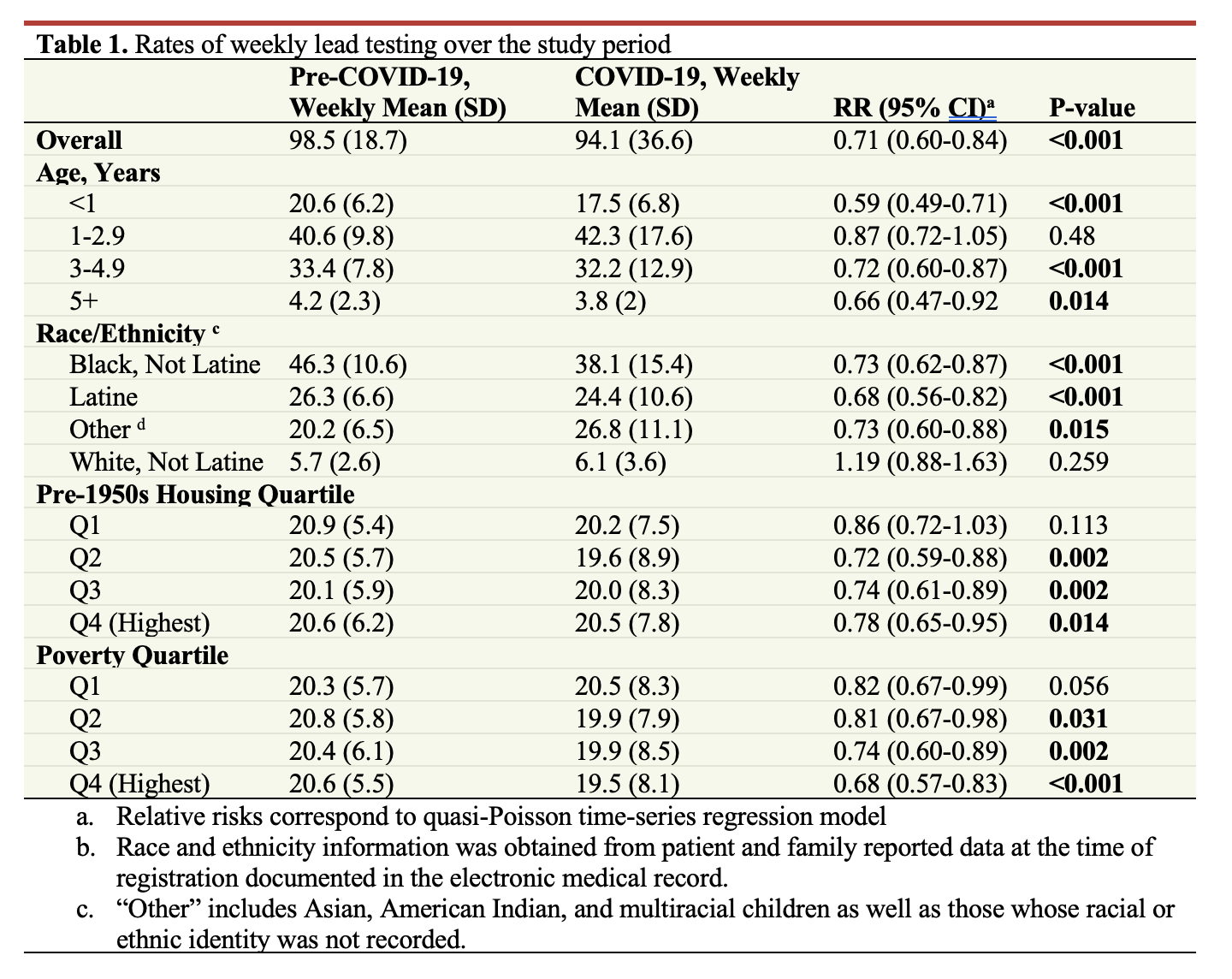Environmental Health
Environmental Health
619 - The impact of the COVID-19 pandemic on childhood lead testing and blood lead levels: The Boston experience
Publication Number: 619.313

Ryan CL Brewster, MD
Resident Physician
Boston Children's Hospital
Boston, Massachusetts, United States
Presenting Author(s)
Background: Although childhood lead exposure has significantly declined over the past fifty years, more than half of children in the United States have detectable blood lead levels (BLLs), with a disproportionate burden on racial and ethnic minoritized, immigrant, and low income populations. The early phases of the COVID-19 pandemic disrupted routine laboratory screening in pediatric clinics and social distancing policies led to increased time at home, placing children at risk for increased lead exposure.
Objective:
Describe the effect of the COVID-19 pandemic on lead testing rates and BLLs at three medical center sites in Boston, MA
Design/Methods:
Retrospective study of two urban academic medical centers and one affiliated community health center in Boston, MA. Inclusion criteria were all children < 18 years old undergoing lead testing between March 10, 2018-March 10, 2022, with March 10, 2020 as the index date separating the pre-COVID-19 and COVID-19 periods. We performed an interrupted time series analysis with a quasi-Poisson regression model to evaluate changes in weekly lead testing. To compare differences in detectable and elevated BLLs (>3.5 ug/dl) between the pre-COVID-19 and COVID-19 periods, we used the two-proportions z test. Here, only the highest BLL in each study period per patient was included if multiple testing instances were recorded. Sociodemographic and laboratory data were obtained from the electronic medical record, and 2020 U.S. Census American Community Survey.
Results: Between March 10, 2018 – March 10, 2022, a total of 15,372 blood lead tests among 12,284 children were performed at the study locations. Overall, there was a 29% (RR 0.71, 95% CI 0.60-0.84) reduction in weekly lead tests between the pre- vs post-COVID-19 pandemic periods. Among those tested, the proportion of Latine children with BLLs ≧3.5 µg/dL (1.7% vs. 2.7%, p=0.029). The burden of detectable BLL increased for children residing in the highest quartile of pre-1950s housing (18.7% vs. 21.9%, p=0.03)
Conclusion(s): The COVID-19 pandemic was associated with decreased pediatric lead testing rates and a rise in the burden of detectable and elevated BLLs in already at risk populations, notably Latine children and those residing in older housing. Our findings suggest that social distancing and quarantine protocols may have increased residential lead exposures and cumulative lead burden. Targeted public health, environmental, and clinical efforts are needed to address excess cases of lead poisoning and care gaps.
.png)
